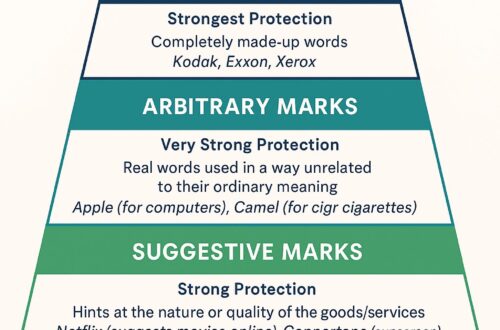The biopharmaceutical industry relies heavily on intellectual property (IP) to drive innovation, but it also faces intense scrutiny over how IP rights affect access to life-saving treatments. From gene patents to drug exclusivity periods, IP in biopharma is a battleground where corporate interests, patient advocacy, and ethical concerns collide. As technologies like CRISPR gene editing and personalized medicine advance, the need to balance protection for innovators with global health equity has become more pressing than ever.
Gene patents have long been a flashpoint in biopharma IP. For decades, companies have patented human genes linked to diseases like breast cancer (BRCA1/2) and cystic fibrosis, arguing that isolating and sequencing these genes constitutes an invention. Critics, however, contend that genes are natural entities and should not be owned by corporations—a position upheld in landmark cases like the 2013 U.S. Supreme Court ruling Association for Molecular Pathology v. Myriad Genetics, which invalidated patents on BRCA genes. Despite this, patents on synthetic gene edits (such as CRISPR-modified DNA) remain legal, sparking new debates. In 2023, a dispute erupted between CRISPR Therapeutics and Editas Medicine over patents for a gene-editing therapy for sickle cell anemia, delaying its approval by two years. Such battles highlight a core tension: while patents incentivize investment in gene therapies (which can cost over
1billiontodevelop),theyalsoraisefearsofmonopoliesthatdriveupprices—somegenetherapiesnowcostover2 million per patient.
Drug patent terms and exclusivity are another contentious issue. Pharmaceutical companies typically enjoy 20 years of patent protection for new drugs, plus additional exclusivity periods for pediatric studies or new formulations, delaying generic competition. This system ensures companies recoup R&D costs—estimated at $2.8 billion per approved drug—but it also leaves millions unable to afford essential medications. The HIV/AIDS crisis of the 1990s exposed this flaw: high patent-protected prices kept antiretroviral drugs out of reach for low-income countries until global pressure forced companies to license generics. A similar debate emerged during the COVID-19 pandemic, when the World Health Organization (WHO) proposed waiving vaccine patents to increase access in developing nations. While the proposal was supported by over 100 countries, it was opposed by pharmaceutical giants like Pfizer, which argued that weakening patents would reduce incentives to develop future vaccines. Ultimately, a compromise was reached: companies voluntarily licensed production to manufacturers in low-income countries, but the episode underscored the need for more equitable IP frameworks in global health crises.
Trade secrets play a critical role in biopharma, particularly in the development of biologics—complex drugs derived from living organisms. Unlike small-molecule drugs, which can be easily reverse-engineered, biologics rely on proprietary manufacturing processes that are often kept as trade secrets rather than patented. This allows companies to maintain exclusivity even after patents expire, as competitors cannot replicate the “know-how” required to produce identical products. For example, Humira, a blockbuster biologic for autoimmune diseases, remained dominant for years after its patent expired because its manufacturer, AbbVie, protected its production methods as trade secrets. While this protects innovation, it also slows the development of biosimilars—cheaper alternatives to biologics—limiting access for patients. Regulators like the U.S. Food and Drug Administration (FDA) have responded by creating pathways for biosimilar approval that require manufacturers to share some production data, striking a balance between secrecy and competition.
International collaboration in biopharma further complicates IP management. Many groundbreaking drugs, such as cancer immunotherapies, are developed through partnerships between academic institutions, biotech startups, and large pharmaceutical companies. These collaborations often involve complex IP agreements that define ownership of discoveries, licensing terms, and revenue sharing. In 2021, a partnership between Merck and a university lab led to a breakthrough in Alzheimer’s research, but a dispute over patent ownership delayed clinical trials. To avoid such delays, organizations like the Bill & Melinda Gates Foundation promote “open science” models, where IP from funded research is shared publicly to accelerate drug development for diseases like malaria and tuberculosis. These models have proven successful: the Open Source Malaria project, which shares all research data and IP freely, reduced the time to develop a new antimalarial compound by 30%.
Ethical considerations loom large in biopharma IP, particularly regarding “evergreening”—the practice of extending patent life by making minor modifications to existing drugs. A 2023 investigation found that 40% of top-selling drugs had their patents extended through trivial changes, such as new dosages or delivery methods, delaying generics by an average of 3–5 years. Patient advocacy groups have pushed for stricter patent office rules to prevent evergreening, with some countries—including India—rejecting such patents outright. Additionally, the rise of “patent thickets” in personalized medicine—where multiple patents cover different aspects of a single therapy—has raised concerns. A single CAR-T cell therapy, for example, may involve patents on the cell modification technique, the delivery mechanism, and even the diagnostic test used to select patients, creating barriers to affordable access.
The future of biopharma IP lies in flexible, context-specific solutions. For rare diseases, where small patient populations make profitability challenging, governments offer extended patent terms or tax incentives to encourage development. For global health threats, “patent pools” like the Medicines Patent Pool (MPP) allow multiple manufacturers to license patents for HIV and hepatitis C drugs at reduced rates, increasing access in low-income countries. As the industry moves toward gene therapies and AI-driven drug discovery, these models will need to evolve—ensuring that IP protects innovation without becoming a barrier to health equity. As WHO Director-General Tedros Adhanom Ghebreyesus noted, “Patents should reward ingenuity, not deny people the medicines they need to survive.”
